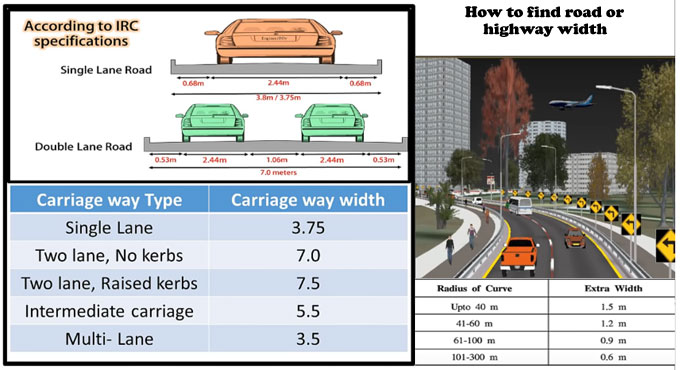TUTORIALS
How to find road or highway width?

A carriageway or roadway comprises road breadth on which a vehicle isn’t confined by any physical barriers or partition to be in motion laterally.
The carriageway breadth depends upon the traffic lane breadth and number of lanes.
As per IRC specifications for carriageway breadth, the highest permissible vehicle breadth is 2.44 m.
The suitable side clearance for single lane road is 0.68 m (on both sides).
The least road breadth must be 3.75 m.
For double lane road, the required side clearance is around 0.53 m (on both sides) and 1.06 m in the centre.
| Carriageway type | Carriageway width |
|---|---|
| Single lane road | 3.75 m |
| Double lane with no kerbs on sides | 7 m |
| Double lane with raised kerbs | 7.5 m |
| Intermediate carriageway | 5.5 m |
| Multi lane | 3.5 m |
The values in the table are applicable only when the highway or road is in straight line.
In case the road has horizontal curves, extra pavement width is provided.
| Curve radius | Additional width |
|---|---|
| Up to 40 m | 1.5 m |
| 41-60 m | 1.2 m |
| 61-100 m | 0.9 m |
| 101-300 m | 0.6 m |
For double lane width, maximum vehicle width = 2.44 m
Side clearance on both sides = 0.53 m
Central distance (supposed) = 1.06 m
Overall carriageway width = 2.44 m + 2.44 m + 0.53 m + 0.53 m + 1.06 m = 7 m
To get more details, go through the following video tutorial.
Lecturer: SL Khan

